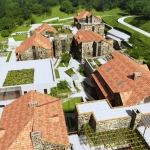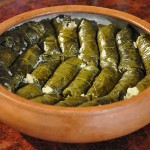When today’s various tablets and medicines did not exist yet, since the oldest times human beings have been using natural mediums-herbs, to cure different diseases. Still in the 3rd millennium B.C., herbs were used in Ancient Egypt, Assyria, India, China. Armenia is rich in herbs. Armenian physicians of the Middle Ages knew the qualities of herbs and classified them according to the greatest effect on human organism. Since the oldest times lychnis and tobacco have been used for treatment of cardiovascular diseases, valerian and mint – in the cases of nervous system diseases, garlic, raspberry-cane, walnut-tree were means for lowering high blood pressure, almond-tree, plantain, dandelion were used to cure stomach diseases, mint and thyme – in the case of respiratory tract diseases, bear-nut and poppy were considered to be anesthetic means etc.
In Armenian manuscripts the first written information about herbs was left by Armenian philosopher, translator, clerical and social figure Eznik Koghbatsi, who was the student of Mesrop Mashtots and lived during the end of the forth century and the first half of the fifth century. Plants as herbs were used by famous scientist of the Middle Ages Mkhitar Heratsi (12th century). Mkhitar Heratsi is considered to be the founder of Armenian classical medicine. He was the personal physician of the king Hetum of Cilicia and the Catholicos of All Armenians Nerses Shnorhali. Heratsi created valuable works on the basis of his studies, but only some pieces of the works have been preserved and are kept in Matenadaran. Among these treasures there are the manuscripts N 1494, N 1770, N 573, N 9393. There are kept Heratsi’s studies in the spheres of human anatomy, pathology, ophthalmology, pharmacology and natural sciences. The descriptions of eye-diseases and the medicines suggested for their treatment are of a great interest.
The principle work of Mkhitar Heratsi is «Jermants Mkhitarutyun» («Relief of Fevers»). Here the herbal treatment suggested by him is essential and is firstly based on the medicinal qualities of plants. For example, he suggests using rose, violet, lily, nunufar, sorrel, watercress, basil, asparagus, among wild plants capers and thyme for treatment of infectious-allergic diseases etc.
The activities of Mkhitar Heratsi and the scientific heritage left by him have had great significance for the development of Armenian medicine. His works were continued by famous physicians Grigoris, Amirdovlat Amasiatsi, and the studies of herbs till today are the greatest achievements of Armenian medicine and spur the interest towards them till today.
Armenian herbs in Medieval Manuscripts
Back To Top










